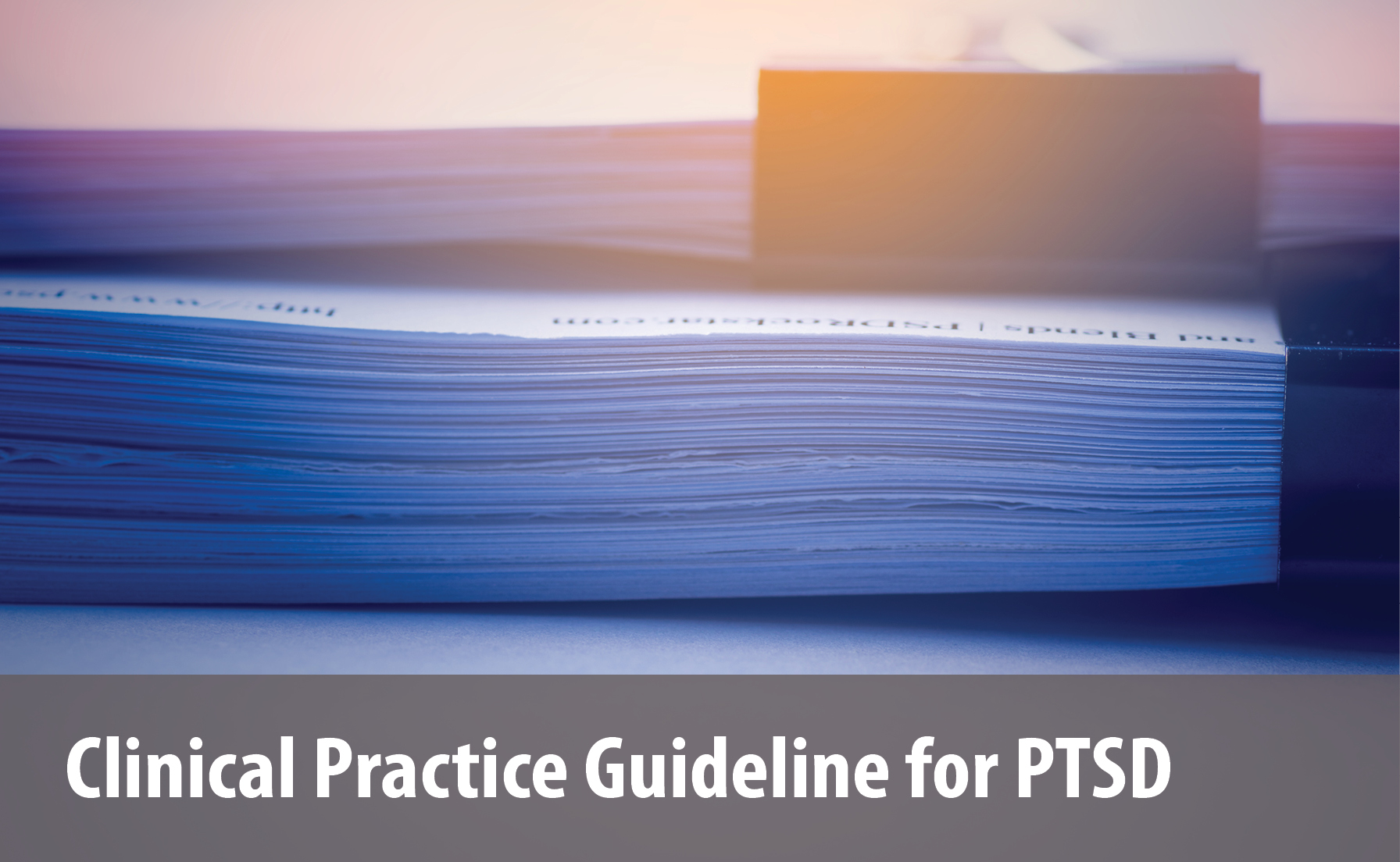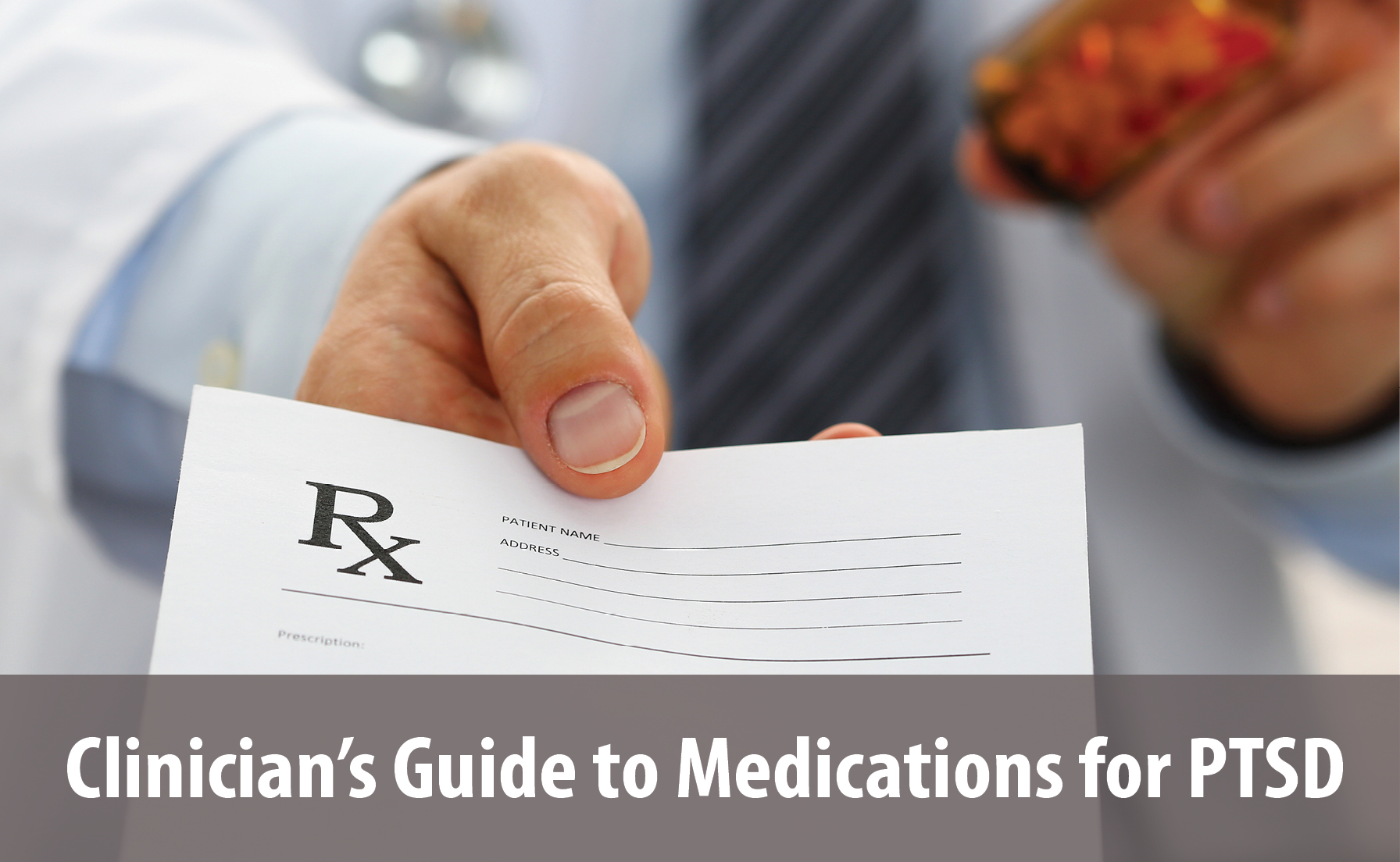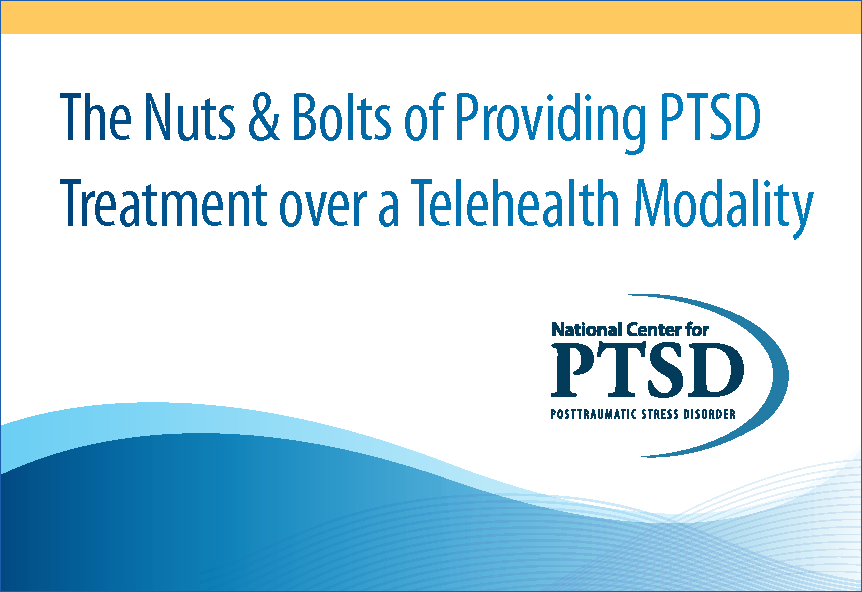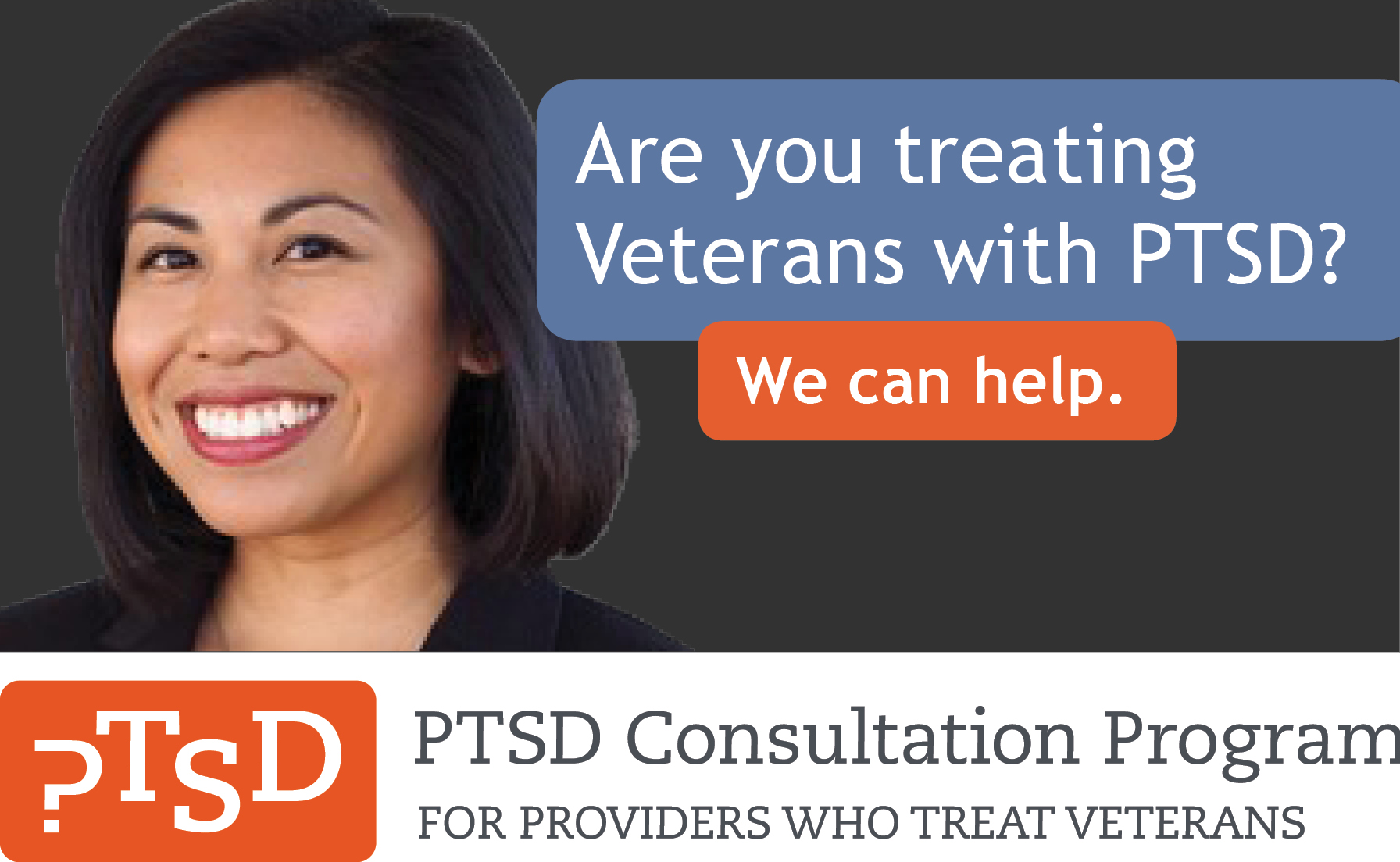PTSD: National Center for PTSD
PTSD and Telemental Health
PTSD and Telemental Health
Although there are effective evidence-based treatments for posttraumatic stress disorder (PTSD), various challenges prevent individuals from seeking or engaging in in-person treatment. The most obvious challenge is geographical. Many people experiencing PTSD reside in rural areas or on tribal reservations where local mental health care is limited. People living in these under-served areas may need to travel great distances to a clinic that can provide specialized, effective care for PTSD.
Alternatively, it may be while the individual can access face-to-face care, there is not a trained therapist locally available. Another barrier individuals face attending in-person appointments involves transportation difficulties or physical disabilities which limit their mobility. Finally, barriers such as natural disasters or pandemics can make it more difficult for patients and providers to travel to receive or provide care in-person. Telehealth may also be preferred because it is more convenient and is more confidential in the sense that no one will see the person coming in for treatment.
Continuing Education Course
PTSD Treatment Via Telemental Health Technology
This online course describes clinical benefits and challenges for telemental health (TMH) technology to treat PTSD, specifically home-based clinical video teleconference (CVT).
One promising solution to aid in bridging these gaps is the advent of electronic communications and information technology also known as telemental health (TMH). Several types of telehealth exist; however, the most widely utilized and studied TMH modality is clinical video teleconferencing (CVT), which allows a therapist and patient in separate locations to see each other and engage in a real-time two-way interaction. When using TMH secure video is recommended in the VA/DoD Clinical Practice Guideline (CPG) for PTSD to deliver trauma-focused psychotherapies that have demonstrated efficacy such as Prolonged Exposure (PE), Cognitive Processing Therapy (CPT), and Cognitive Behavioral Therapy for Insomnia (CBT-I) (1). TMH may also be used with other types of treatment, but there is not enough evidence yet for its effectiveness for a specific treatment recommendation in the CPG.
What Is Telemental Health? (TMH)
Telemedicine, also known as telehealth, uses electronic communications and information technology to provide and support healthcare when distance separates patients from the clinician (1). Telemedicine uses various communication methods to connect clinicians and patients in lieu of their meeting in person.
In This Article
Telemedicine, also known as telehealth, uses electronic communications and information technology to provide and support health care when distance separates patients from the clinician (2). Telemedicine uses various communication methods to connect clinicians and patients in lieu of their meeting in person.
The phrase "telemental health services" typically refers to behavioral health services that are provided using communication technology (3). These services include clinical assessment, individual and group psychotherapy, psychoeducational interventions, cognitive testing, and general psychiatry.
The major benefit of TMH is that it eliminates travel that may be disruptive to treatment engagement or costly. In addition, TMH is a useful tool in situations, such as correctional and forensic settings, where it is difficult to transport the patient to a clinician. TMH also allows mental health providers to consult with or provide supervision to one another. Providers may also utilize TMH when patients are traveling out-of-town and would like to attend appointments from wherever they are located. Telemental health can also enable continued delivery of care when unexpected circumstances, such as a disaster or pandemics, limit patients' ability to travel to a clinic.
PTSD Treatment via Clinical Video Teleconferencing
With the increase in demand for mental health services, the limited availability of PTSD specialty services in many geographic areas, and the rapid growth in technology, TMH modalities are dramatically altering the mental health landscape in general and specifically for trauma survivors. Although TMH may utilize a variety of technologies, the most widely used and best studied technology is clinical video teleconferencing technology. Using CVT, a patient (or group of patients) in one location and a clinician in a different location each utilize a computer monitor or television screen to see and hear each other in real time.
Originally, TMH providers delivered PTSD treatments via CVT through a "hub and spoke model," whereby a provider physically located in large healthcare facility would meet remotely through CVT with a patient physically located in a smaller clinic or healthcare facility office (office-based CVT). In recent years, technology has further evolved, and, with the dramatic growth of broadband internet access, providers and health care systems have adopted home-based CVT. Home-based CVT allows providers to meet virtually through CVT with patients located in their homes or another private location (e.g., library, a hotel during work-related travel, their car during lunch break) often using their personal laptop, tablet, or smartphone and increasing flexibility. Additionally, in many cases, this home-based model allows for providers to also be in their home which further broadens the scope of specialty care and afterhours access.
Outcomes of PTSD Treatment via Video Teleconferencing
Research has found that both office-based and home-based CVT are feasible and clinically effective for the delivery of individual and group PTSD treatments. Most of the research examining the efficacy of PTSD treatments delivered via CVT has been conducted with Veteran populations. Two non-inferiority randomized clinical trials (RCTs) conducted with female and male Veterans found that individual and group Cognitive Processing Therapy (CPT) delivered via office-based CVT were non-inferior (i.e., equivalent) to in-person CPT (4,5). This offered evidence that providers can deliver CPT through office-based CVT without compromising its efficacy. Acierno and colleagues (2017) found that individual Prolonged Exposure (PE) delivered via home-based PTSD was equivalent to PE delivered face-to-face in the office (6). Individual PE delivered via home-based and office-based CVT reduced PTSD symptoms as much as in-home in-person therapy (7). This is consistent with findings from Peterson and Morland (2019) using home-based CVT to deliver CPT into the home (8). These findings are promising and forces the health care system to rethink where, how, and when it delivers care which would ultimately afford more options for providers and more choices for individuals with PTSD.
Alliance, Dropout, and Patient Preferences in CVT Treatment
A common concern that comes up with providing virtual care through CVT is whether therapy "process" factors such as satisfaction, therapeutic alliance, attendance and treatment compliance are impacted when the patient and the provider are not in the same room. When CVT has been used to treat PTSD, most studies report "as good as" effects on process variables, and in some cases better effects. A recent review (not limited to treatment of PTSD) concluded that working alliance may be weaker in CVT than with in-person treatment; however, despite this loss in alliance, CVT produced as much improvement in symptoms as in-person treatment (9). Clinicians should be aware that it may be more difficult to read or convey non-verbal responses in therapy via CVT, and they may need to take extra steps to verbalize responses to ensure that rapport is established and maintained.
Use of CVT does not affect clinician's adherence or fidelity in delivering manualized treatments (10,11). Dropout rates are similar in CVT and traditional office-based care (12). Recent studies (7,8) found that when compared to traveling to the clinic, delivering PTSD evidence-based practices (EBPs) into the Veteran's home either through home-based CVT or in-person had lower dropout rates. Thus, clinicians can feel confident that if they choose to use CVT, they can still form a strong therapeutic alliance, maintain good fidelity, and keep patients engaged virtually.
Patient-centered care emphasizes the importance of considering patients' preferences when providing care. Studies have also found that most individuals are willing to use CVT, and, even when they do not originally prefer it, they often grow to like it throughout therapy. Additionally, U.S. Veterans with PTSD are not only willing to engage in care through CVT, but two recent projects (7,13) have found that about half prefer to receive individual or couples-based PTSD treatments through home-based CVT. Providers can utilize shared decision-making to work with patients to choose both their preferred treatment type and delivery modality. In sum, if providers decide to implement home-based CVT within their clinical practice, they may be able to fulfill more individuals' preferences for how they receive their care.
Clinical and Practical Considerations for CVT
Below are suggestions to address unique clinical and logistical considerations in providing care through CVT.
Patient safety
Risk management and assessment is always of utmost importance but is even more paramount when providing care through CVT. If possible, providing an initial in-person session to evaluate risk level (e.g., suicidality, level of substance use) is helpful to determine if a patient is appropriate for care through CVT. However, there are no current absolute contraindications for patients being assessed or treated through home-based CVT. Engaging in PTSD treatments can be distressing for patients and individuals with PTSD may have suicidal ideations. Thus, when conducting home-based CVT, providers should implement clinical emergency protocols. For example:
- Providers should have the patient sign a release of information (ROI) for an identified personal emergency contact (e.g., a spouse) prior to the start of treatment. However, obtaining an ROI may delay care if sent via mail so providers may utilize fax, secure email, or obtaining a screenshot of the ROI.
- Providers should also confirm the patient's location at the start of every visit in case the provider needs to contact local emergency personnel.
- Providers can also have a suicide safety plan in place if a client is determined to be high risk, and ensure the client is aware of other emergency resources if they become necessary, such as the location of the nearest emergency room or clinic.
Creating an appropriate therapy setting
Setting appropriate boundaries and expectations is also important. For example, providers may inform patients prior the first appointment to treat CVT appointments as they would traditional care, such as wearing appropriate clothing, minimizing disruptions (e.g., pets in the room), and having a private location to meet. Additionally, assessing for any mobility concerns or physical disabilities during the initial session may give providers important information that may otherwise be missed. For example, providers may not be able to see in the camera's field of view, if a patient is in a wheelchair, which may be important for practice assignments (e.g., feasibility of specific in-vivo exposures).
One essential key to working with PTSD patients is to establish a sense of safety, comfort, and trust. This may seem like an added challenge when the clinician is not physically in the room; however, there are tools and techniques that can be used to achieve these goals. Some helpful tips:
- Administering EBPs for PTSD via TMH is not much different from face-to-face therapy. Very few modifications to treatment protocols are necessary. Enhancements to virtual PTSD therapy often include the use of mobile apps, such as PTSD Coach, PE Coach, and CPT Coach
- A pre-treatment phone screen allows for gauging patient understanding of the treatment, introducing the technology, and determining a patient's capacity to connect to therapy through video.
- Both CPT and PE require an established electronic exchange protocol for written materials, homework, and questionnaires. Fax machines are preferable, but patients can simple do a screen shot to share information.
- For CPT, therapists should have copies of patient materials during the session to assist when reviewing or explaining worksheets and handouts.
- For group CPT sessions, a brief, structured check-in at the start of the session assists with containment of the group and orients the therapist to the emotional state of the clients.
- For PE, the client must know how to record the session in the location where they sit. Having a backup recorder in your office is helpful.
- In-session avoidance and hypervigilance can be more difficult to manage via telemental health, but telehealth appears to pose additional clinical difficulties only for patients with very severe presentations.
Beyond evidence-based treatments, TMH can also be used successfully to provide clinically significant interventions such as basic PTSD education, symptom management, coping-skills training, stress management.
Practical and logistical considerations
Aside from clinical considerations, there are also practical and logistical considerations to reflect upon and plan for when conducting care via TMH. When conducting services through CVT, clinicians need to ensure there is a support phone number that either client or therapist can utilize if the CVT equipment fails. With regards to the clinical environment on the part of the therapist, it is helpful to consider appropriate lighting and the position of the camera so patients can clearly see the provider. The client's environment is also necessary to take into consideration; slow internet speeds, poor audio, or pets in the home may disrupt the flow of therapy. In some cases, health care systems may be able to lend equipment (e.g., a tablet) to patients to circumvent these challenges. Providers may encourage patients in individual or group CVT to send the provider copies of their completed homework assignments in advance through secure platforms (e.g., My HealtheVet in VA).
Continuing Education Course
The Nuts & Bolts of Providing PTSD Treatment over a Telehealth Modality: Clinical Considerations
This PTSD 101 online course reviews modifications for providing evidence-based psychotherapy for PTSD via telemental health.
Pros and Cons of Telemental Health for PTSD
Before deciding to provide a clinical intervention utilizing TMH, it is important to carefully consider the patient's clinical needs and the potential benefits and costs. As with other remote services, these considerations include what clinical support is available at the patient's site and what availability there may be for follow-up care. A thorough evaluation of needs at a particular site is the first step.
Pros
- Significantly reduces the costs, both in time and money, of having patients or clinicians travel to in-person sessions.
- Allows small community clinics to offer access to specialized interventions or PTSD specialists.
- Provides access to those who may not otherwise have access to care (e.g., rural Veterans, individuals with mobility issues, individual in recovery from a medical procedure, clients with limited financial resources).
- Increases flexibility to provide care wherever a patient is located (e.g., out of town for work) and at more times throughout the day.
- Promotes physical health by allowing providers to provide care remotely to individuals who may have a contagious illness and may otherwise not be seen in-person to contain the spread of illness.
Cons
- Equipment, maintenance, and fees for CVT, for example, can be costly for health care systems, providers, and patients. If patients do not have the financial resources to support CVT, such as a smartphone, tablet, or computer, then healthcare systems or providers may be able to temporarily lend equipment, but this may not always be feasible.
- The quality of the equipment ranges widely, with lower-end equipment or poor internet connectivity being quite unreliable.
- Clinicians may require additional training to ensure that they can maximize the benefits of the technology and minimize technical malfunctions.
- Additional resources may be required to support an available backup technician or means of communication (e.g., telephone).
- Laws, regulations, and licensure requirement can evolve rapidly so clinicians must also be careful to follow guidelines and interstate licensing rules when applicable.
Considerations for Risk Assessment
There can be clinical challenges when using TMH for PTSD. Perhaps the biggest clinical challenge is that the clinician is not physically present to address crises such as suicidal thoughts and aggression, which are commonly associated with chronic PTSD. However, providers can still conduct risk assessments and safety planning via CVT. Having a backup clinician on-site with the patient is strongly suggested for office-based CVT and an emergency contact and information for local emergency personnel is necessary for home-based CVT. It is critical that the provider always have the patient's address or location during virtual therapy in case medical or psychiatric emergencies occur and require emergency personnel to be deployed. Although quality CVT equipment and connections can render extremely clear images, clinicians may find it somewhat challenging to pick up on nonverbal cues, such as psychomotor agitation or poor hygiene. There is also concern that the patient may not pick up on the clinician's warmth and empathy and will perceive the interaction as impersonal; however, studies have found that the therapeutic alliance is still strong through CVT.
Summary
The use of TMH has expanded the populations that we can serve and allows us to provide care to more individuals in need. The current literature suggests that TMH, particularly CVT, is effective, feasible, and acceptable, and can increase trauma survivors' access to effective PTSD care.
Resources
The following resources may be helpful for providers using TMH:
- American Psychiatric Association Telepsychiatry Toolkit
 offers information on training, clinical practice, and policy considerations for telepsychiatry
offers information on training, clinical practice, and policy considerations for telepsychiatry - American Telemedicine Association
 offers news, information and resources for telehealth delivery
offers news, information and resources for telehealth delivery - VA providers can access information at: vaww.telehealth.va.gov
- Providers working with Veterans can ask questions or receive consultation about PTSD-related issues through our PTSD Consultation Program
References
- Department of Veterans Affairs and Department of Defense. (2017). VA/DOD Clinical Practice Guideline for the Management of Posttraumatic Stress Disorder and Acute Stress Disorder. Washington DC: Author. Retrieved from: https://www.healthquality.va.gov/guidelines/MH/ptsd/
- Institute of Medicine (US) Committee on Evaluating Clinical Applications of Telemedicine. (1996). Telemedicine: A guide to assessing telecommunications for health care. (M. J. Field, Ed.). National Academies Press.
- Brown, F. W. (2017). Telepsychiatry and health technologies: A guide for mental health professionals. The American Journal of Psychiatry, 174(11), 1126-1126.
- Morland, L. A., Mackintosh, M. A., Greene, C. J., Rosen, C. S., Chard, K. M., Resick, P., & Frueh, B.C. (2014). Cognitive Processing Therapy for posttraumatic stress disorder delivered to rural Veterans via telemental health: A randomized noninferiority clinical trial. Journal of Clinical Psychiatry, 75(5), 470-476. https://doi.org/10.4088/JCP.13m08842
- Morland, L. A., Mackintosh, M. A., Rosen, C. S., Willis, E., Resick, P., Chard, K., & Frueh, B. C. (2015). Telemedicine versus inâ€person delivery of Cognitive Processing Therapy for women with posttraumatic stress disorder: A randomized noninferiority trial. Depression and Anxiety, 32(11), 811-820. https://doi.org/10.1002/da.22397
- Acierno, R., Knapp, R., Tuerk, P., Gilmore, A. K., Lejuez, C., Ruggiero, K., Muzzy, W., Egede, L., Hernandez-Tejada, M. A., & Foa, E. B. (2017). A non-inferiority trial of Prolonged Exposure for posttraumatic stress disorder: In person versus home-based telehealth. Behaviour Research and Therapy, 89, 57-65. https://doi.org/10.1016/j.brat.2016.11.009
- Morland, L. A., Mackintosh, M., Glassman, L. H., Wells, S. Y., Thorp, S. R., Rauch, S. A. M., Cunningham, P. B., Tuerk, P. W., Grubbs, K. M., Golshan, S., Sohn, M. J., & Acierno, R. (2019). Home-based delivery of variable length prolonged exposure therapy: A comparison of clinical efficacy between service modalities. Depression and Anxiety, https://doi.org/10.1002/da.22979
- Peterson, A.L. & Morland, L. A. (2019, October). In-home CPT and PE for combat-related PTSD: Preliminary results of two randomized clinical trials. 4th Annual San Antonio Combat PTSD Conference. Symposium conducted at the meeting of STRONG STAR Consortium, Consortium to Alleviate PTSD, and University of Texas Health Science Center at San Antonio, San Antonio, TX.
- Norwood, C., Moghaddam, N. G., Malins, S., & Sabin-Farrell, R. (2018). Working alliance and outcome effectiveness in videoconferencing psychotherapy: A systematic review and noninferiority meta-analysis. Clinical Psychology & Psychotherapy, 25(6), 797-808. https://doi.org/10.1002/cpp.2315
- Frueh, B. C., Monnier, J., Grubaugh, A. L., Elhai, J. D., Yim, E., & Knapp, R. (2007). Therapist adherence and competence with manualized cognitive-behavioral therapy for PTSD delivered via videoconferencing technology. Behavior Modification, 31(6), 856-866. https://doi.org/10.1177/0145445507302125
- Morland, L.A., Greene, C.J., Grubbs, K., Kloezeman, K., Mackintosh, M., Rosen, C., & Freuh, B. C. (2011). Therapist adherence to manualized cognitive-behavioral therapy for anger management delivered to Veterans with PTSD via videoconferencing. Journal of Clinical Psychology, 67(6), 629-638. https://doi.org/10.1002/jclp.20779
- Turgoose, D., Ashwick, R., & Murphy, D. (2018). Systematic review of lessons learned from delivering tele-therapy to Veterans with post-traumatic stress disorder. Journal of Telemedicine and Telecare, 24(9), 575-585. http://doi.org/10.1177/1357633X17730443
- Wells, S. Y., Jaime, K., Schnitzer, J., Grubbs, K., & Morland, L.A. (2018). Examining Veterans' preferences for family-based posttraumatic stress disorder services. 34th Annual Meeting of the International Society for Traumatic Stress Studies. Poster conducted at the meeting of International Society for Traumatic Stress Studies, Washington, D.C.
You May Also Be Interested In

VA/DoD Clinical Practice Guideline for PTSD (2023)
Get information on evidence-based treatment recommendations for PTSD.

Clinician's Guide to Medications for PTSD
Get key information and guidance on the best medications for PTSD.


























